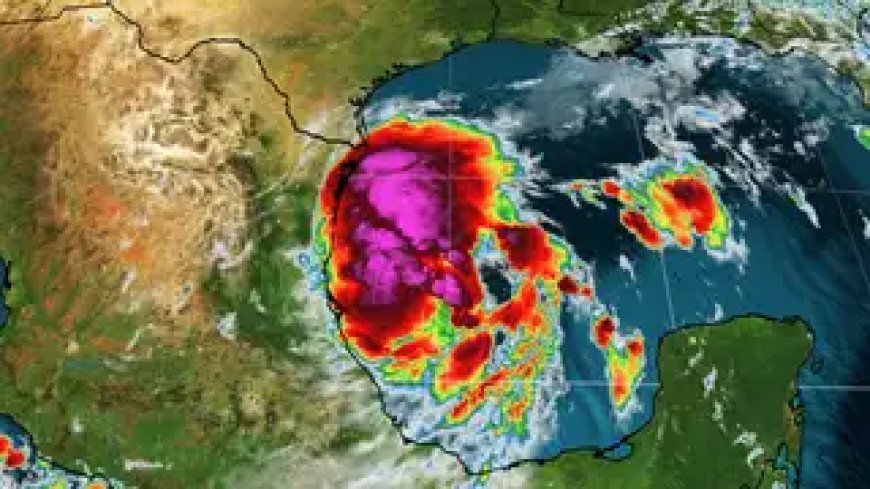Gulf Tropical Storm and Hurricane Forecast: What You Need to Know

As the Gulf of Mexico enters its most active storm season, preparing for tropical storms and hurricanes becomes essential for the safety and well-being of millions. With changing weather patterns and increasing storm intensity, understanding the forecast, the science behind these storms, and how to prepare is more critical than ever. This article offers comprehensive insights into Gulf tropical storms and hurricanes, their formation, their potential impacts, and how to stay informed.
What Is a Tropical Storm?
A tropical storm is a weather system with winds of 39 to 73 miles per hour. It forms over warm tropical waters, such as those in the Gulf of Mexico, and brings heavy rainfall, strong winds, and sometimes flooding. Tropical storms are part of a continuum of storm systems, including tropical depressions and hurricanes. The primary difference between a tropical storm and a hurricane is the wind speed, with hurricanes being more powerful.
When conditions in the Gulf become favorable—such as warm ocean temperatures and low wind shear—a tropical storm can intensify into a hurricane.
Hurricane Formation in the Gulf
Hurricanes are complex meteorological phenomena that require several factors to come together. These include:
- Warm Ocean Water: Temperatures need to be at least 80°F (26.5°C) for hurricanes to form. The Gulf of Mexico typically experiences such conditions from late spring to early autumn.
- Moisture in the Air: High levels of humidity in the lower and middle levels of the atmosphere fuel storm clouds.
- Low Wind Shear: Wind shear, or the difference in wind speed and direction at different altitudes, can inhibit the formation of hurricanes. Low wind shear allows a storm to develop vertically and grow stronger.
Once these elements align, a disturbance in the atmosphere can begin to spin, gaining strength and becoming a tropical depression. If it continues to intensify, it can grow into a tropical storm and eventually a hurricane.
Different Categories of Hurricanes
Hurricanes are classified according to the Saffir-Simpson Hurricane Wind Scale, which ranks them based on their wind speeds. The categories are as follows:
- Category 1: Winds of 74-95 mph. These storms cause minor damage but can still be dangerous due to flooding and power outages.
- Category 2: Winds of 96-110 mph. Moderate damage, including more severe flooding and power disruptions, is expected.
- Category 3: Winds of 111-129 mph. Considered a major hurricane, Category 3 storms can cause devastating damage, particularly to homes and infrastructure.
- Category 4: Winds of 130-156 mph. These hurricanes bring catastrophic damage, making large areas uninhabitable for weeks or months.
- Category 5: Winds exceeding 157 mph. The most severe category, Category 5 hurricanes cause total devastation, with widespread destruction of homes, businesses, and critical infrastructure.
Why the Gulf of Mexico Is So Vulnerable
The Gulf of Mexico is particularly susceptible to hurricanes and tropical storms due to its warm waters, which provide the perfect environment for these storms to strengthen. Additionally, the geography of the region, with its coastline and low-lying areas, makes it more vulnerable to storm surges and flooding.
Key cities along the Gulf Coast, such as New Orleans, Houston, and Tampa, often find themselves in the path of tropical storms and hurricanes, putting millions of residents at risk. The combination of dense populations and vulnerable infrastructure means that even a moderate storm can cause significant damage.
Impact of Storm Surges
One of the most dangerous aspects of hurricanes, particularly in the Gulf, is the storm surge. Storm surge occurs when the winds from a hurricane push water toward the shore, causing the sea level to rise dramatically. This sudden rise in water can flood homes, roads, and entire communities.
In some cases, storm surge can be more deadly than the hurricane's winds. For example, during Hurricane Katrina in 2005, storm surge levels in parts of the Gulf Coast reached as high as 28 feet. Such surges overwhelm levees and coastal defenses, causing catastrophic flooding.
Preparing for Tropical Storms and Hurricanes
The importance of preparedness cannot be overstated when living in hurricane-prone areas. Here are some key steps that residents of the Gulf Coast can take:
1. Stay Informed
Keep an eye on the National Hurricane Center's updates, especially during hurricane season. Forecasts often change, and it's crucial to stay informed about potential shifts in a storm's path or intensity.
2. Develop an Emergency Plan
Ensure that you and your family have an evacuation plan in place. Know the routes to safer locations, and make sure that all family members understand the plan. It’s also a good idea to designate an out-of-town contact person who can help coordinate communication during the storm.
3. Secure Your Home
Reinforce windows and doors, especially if you live in a high-risk area. Hurricane shutters can provide added protection, and securing outdoor furniture and other items can prevent them from becoming dangerous projectiles during high winds.
4. Prepare an Emergency Kit
Stock up on essentials such as non-perishable food, water, batteries, medications, and first-aid supplies. A three-day supply is typically recommended, but for stronger hurricanes, consider stocking enough supplies for at least a week.
5. Monitor Evacuation Orders
If local authorities issue an evacuation order, follow it. It's better to leave early than risk being caught in the storm. Remember that storm surges and flooding can cut off evacuation routes quickly.
What to Do After a Storm
Once a storm has passed, the aftermath can be just as dangerous as the storm itself. Flooded roads, downed power lines, and damaged infrastructure can pose significant risks. Follow these guidelines for post-storm safety:
- Avoid Flooded Areas: Floodwaters can hide debris, sinkholes, or downed power lines. Avoid walking or driving through floodwaters.
- Wait for All-Clear Alerts: Only return to your home when authorities have declared it safe. Check for structural damage before re-entering your home.
- Check on Neighbours: If it's safe, check on your neighbors, especially the elderly or those with limited mobility, who may need assistance.
The Future of Gulf Hurricanes
With climate change altering global weather patterns, scientists predict that hurricanes in the Gulf of Mexico may become more frequent and intense in the coming decades. Rising sea levels and warmer ocean temperatures are likely to fuel more powerful storms, increasing the risks of flooding and storm surges.
Governments, communities, and individuals need to prepare for these changes. Strengthening infrastructure, improving coastal defenses, and enhancing early warning systems will be crucial in mitigating the impacts of future hurricanes.
As the Gulf Coast faces increasingly severe tropical storms and hurricanes, preparation and understanding are the keys to staying safe. By staying informed, creating a solid emergency plan, and taking the necessary precautions, you can protect your family, property, and community from the devastating effects of these storms.
What's Your Reaction?


























